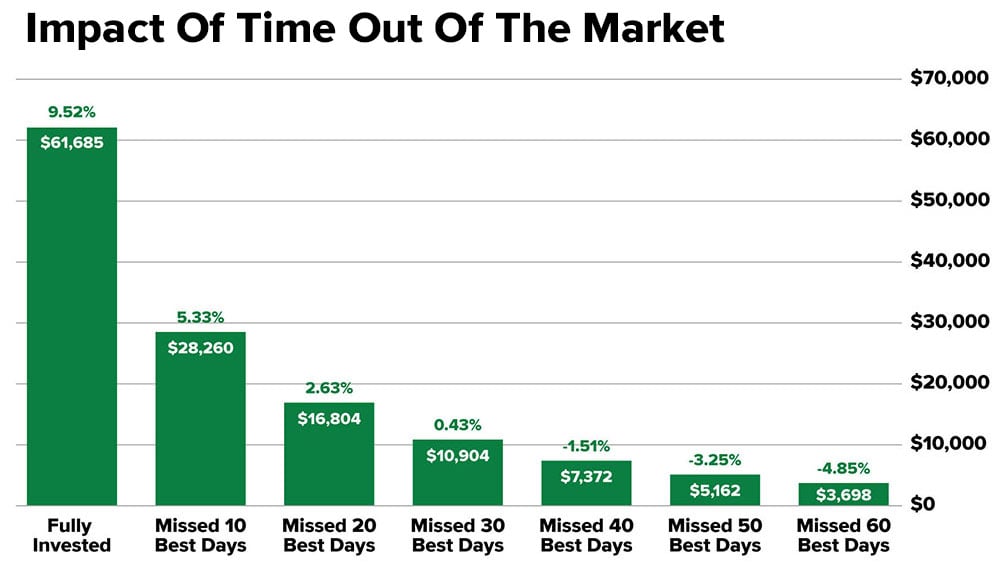Watching your portfolio decline is never fun. And when it happens day after day… the pain is palpable. Unfortunately, that’s when many investors’ emotions can get the best of them, and they want to take action.
If this sounds like you, we know where you’re coming from. We’re investors too. But we’re also here to say, “Don’t push the panic sell button.” Here’s why.
When you try to time the market by selling when it’s falling with the notion that you’ll get back it when it rises again, you’ll likely miss the best days of the market. Because the market turns quickly. In fact, over the last 20 years, from January 1, 2002-December 31, 2021, six of the seven best days occurred after the worst days, and seven of the best 10 days fell within two weeks of the 10 worst days.1
So what happens if you sell and miss those best days? Your potential return can fall dramatically. For example, over the last 20 years, if you stayed fully invested in an S&P 500 Index fund, your money should have grown by 9.52%. But if you sold during a market downturn and then missed those 10 best days, your portfolio would be nearly half of that—just 5.33%. And missing the best 20 days would cut your return by more than 70%.

Source: JP Morgan Asset Management. The dollar amount shows the performance of a $10,000 investment between Jan. 1, 2002 and Dec. 31, 2021. Returns are based on the S&P 500 Total Return Index. Indices do not include fees or operating expenses and are not available for investment. The hypothetical performance calculations are shown for illustrative purposes only and are not meant to be representative of actual results while investing over the time periods shown. Calculations are gross of fees but include reinvested dividends. Hypothetical performance do not reflect actual trading, liquidity constraints, fees and other costs and may not account for the impact of certain market factors such as lack of liquidity. Simulated trading programs are designed with the benefit of hindsight. Returns will fluctuate and an investment upon redemption may be worth more or less than its original value. Past performance is not indicative of future results.

Like what you're reading?
Join the thousands of readers getting stories like this delivered straight to their inbox every Thursday — for free. Give it a spin, enter your email to sign up.
Footnotes
1JP Morgan Asset Management Guide to Retirement. Data from Jan. 1, 2002 through Dec. 31, 2021.
Related Articles

Retiring Early? How Can You Bridge the Income Gap
Retiring early is a dream for many. For others, it may be a necessity or an unexpected development....

Understanding Medicare IRMAA
You’re enjoying your retirement, living within your retirement budget, and suddenly your Medicare...

